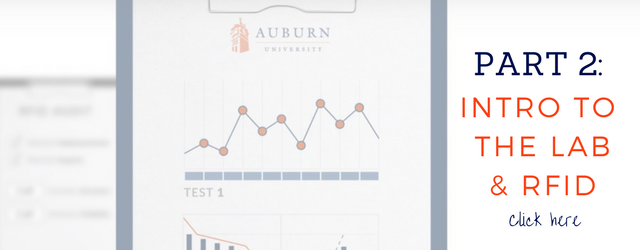Auburn RFID Lab – Part 1: The Retail Environment
Introduction
This is part one of a four-part series geared towards learning more about how RFID can benefit retail as an industry through implementations on the retail floor, in the changing room, and through cycle counts.
The RFID Lab at Auburn University is a research institute focusing on the business case and technical implementation of RFID and other emerging technologies in retail, supply chain, and manufacturing. RFID performance and quality testing has been a staple of the RFID Lab for years, and the Lab has pioneered most of the modern testing practices for RFID in retail. For more information on the RFID Lab at Auburn, click here.
[Audio Transcription Below]
Testing feasibility of RFID in the retail environment plays a large role in what we do here on a daily basis.
RFID is quite beneficial to retail stores along the lines of loss prevention as well as item visibility. If a theft were to happen inside of a retail store that was using RFID, you are able to have overhead of which products were going directionally out of the store at any specific point in time. This in turn can trigger the camera system, and alert a siren to go off.
Retail Changing Room
One of the other demos that we have here at the retail side of the lab is the changing room. With antennas established towards the ceiling of each changing room, we are able to maintain visibility of each article of clothing that enters the room.
Retail Cycle Count
The last aspect of RFID in the retail environment is what is known as a cycle count. Maintaining a level of inventory that corresponds to the level of demands that are expected is always something that is on a store owners mind. Having to constantly count inventory levels by hand or using barcodes requires time and energy. With an RFID handheld, you can scan a jean rack with approximately 500 jeans in under five seconds. Another way that we are able to run cycle counts here at the RFID lab is through a robot known as Jianny Five. This robot, built by one of our student pursuing his PhD has a map of the retail store that is uploaded to the robot. Then, it is able to drive autonomously around the lab performing a cycle count, eliminating the human element. Many companies have already established their own RFID models to help with sock outs, one major retailer, for example, found a 26% reduction in stock-outs in their stores.
Conclusion
If you have any questions about RFID testing comment below or contact us for more information.
For more information about Auburn's RFID lab - stay tuned for the rest of the series or contact the lab!
To read more about the Auburn RFID Lab, check out the links below!
- Auburn RFID Lab – Part 2: Introduction to the Lab & RFID
- Auburn RFID Lab – Part 3: RFID Portals in the Warehouse

